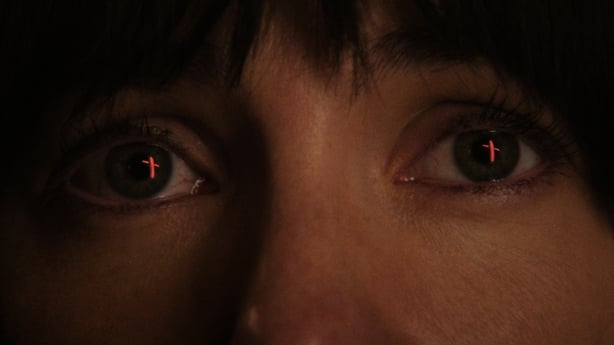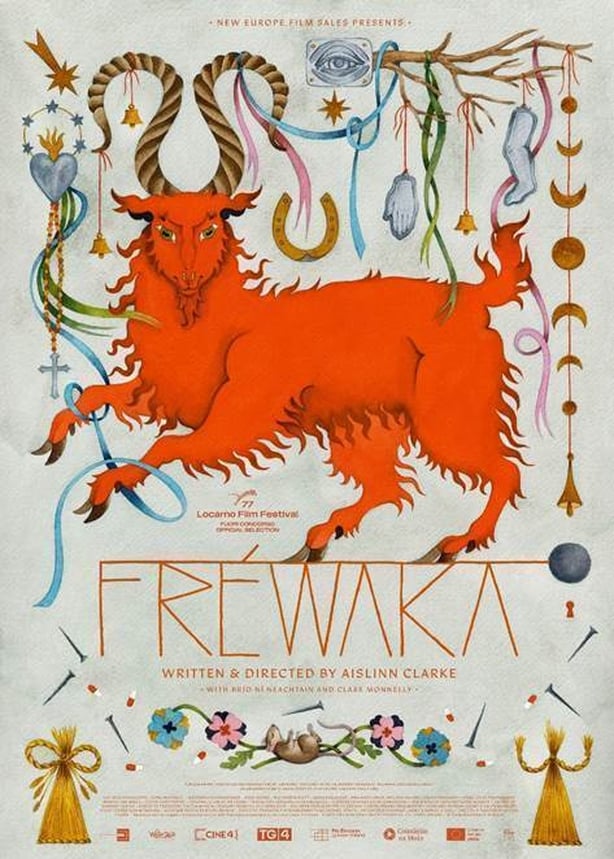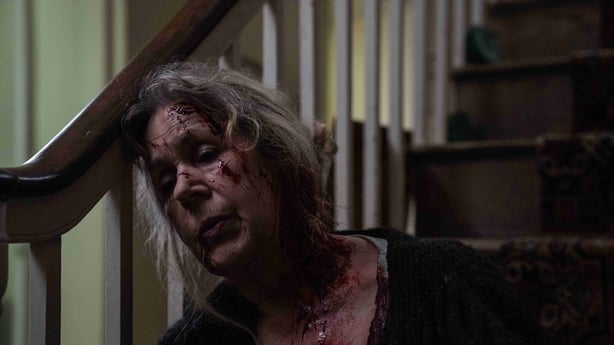Aislinn Clarke's Irish language horror, Fréamhacha, is turning heads - no, not in an Exorcist way - as it raises questions about what happens when two women from different backgrounds collide and are forced to face their own individual trauma.
Siad Clare Monnelly (Shoo) agus Bríd Ní Neachtain (Peig) an bheirt bhan a dtagann a ndomhaineacha le chéile agus ar a gcasann an scéal.
Canathaobh, cén áit agus cathain ar bhuail an smaoineamh tú don scannán?
"Scríobh mé scannán cúpla bliain ó shin a chur TG4 amach, Doineann, ar son stiúrthóir eile agus tháinig an comhlacht a bhí ina mbun sin, Doubleband, chugam agus d'iarr siad orm scannán uafáis i nGaeilge a scríobh agus a stiúradh."

"Rith sé liom ag an bpointe sin, más i nGaeilge a bheidh sé, cén fáth nó cad é an sceál cuí chuige sin? Mar sin díríonn sé ar théamaí Éireannacha, ach trén lionsa agamsa ar Éireann agus Éireannachas."
"The two main characters represent the two kinds of Ireland: Peig is the 'old Ireland’ she’s rural, she’s cut-off, she only speaks Irish and seems like she’s going to be more conservative, while Shoo, who’s from the city, in a same-sex relationship, she’s the ‘progressive, modern, forward-looking’ Ireland, but when they come together there’s a bit of wrangling over these issues."
"I wanted to do a film in Irish as I was raised and educated in Irish, my dad was big into the Irish language and this seemed like an interesting angle to take on a story. It also gave me the freedom to be unapologetically Irish rather than having to please financers or producers in different ways."

Conas ar dhírigh tú ar an stiúrthóireacht leis an gcliar?
"Bhuail mé le Clare ag premiere Doineann, ina raibh sí féin mar charachtar ach níor bhuail mé le Bríd go dtí go raibh an casting ar siúl. Agus cé go bhfuil linn na n-aisteoirí in Éireann beag, agus aisteoirí i linn na Gaeilge níos lú fós, ní raibh mé ar an ngannchuid ar chor ar bith. Is aisteoirí den scoth iad beirt, go hiomlan foirfe dos na páirteanna acu. Bhí an t-ádh dearg liom gur aimsigh mé chomh tapaidh iad."
Cé gur scannán uafáis atá ann, deir Clarke nach bhfuil in horror ach dráma ina dtarlaíonn rudaí uafásacha, sceoiniúíl.
"They were both very generous and very good but neither had been in a horror before so they were asking whether they were supposed to do something different, but its just drama where scary things happen."
"So in terms of directing I have conversations about who the character is – almost as though we are all being a therapist for this character – we need to totally understand their psychology. If the actor knows exactly why that character is behaving in that way in that moment that’s how you get those truthful performances. And its a film dealing with generational trauma and recovery from trauma, if that’s even possible. Horror is just a useful device for exploring that."

A big fan of horror but also of cinema generally, Clarke thinks there’s a lot of snobbery around horror and its exclusion from the mainstream for a perception that it's an inferior artform despite the fact that we don’t treat all the substandard drama films that are produced every year with the same disdain.
While she admits there are different levels of horror film - as there are in all genres - she also suggests that unfortunately, some people associate horror with a few girls in bikinis getting chased by a guy with a knife (of which there are some famous examples).
Tá go leor moladh faighte ag Fréamhacha tar éis a premier in Locarno na hEilbhéise le déanaí agus beidh sé ar chamcuaird na bhféilte scannán éagsúla ar feadh scaitheamh anois, sa tSeapáin, mar shampla, agus in Citges na Spáinne, ag mór-fhéile scannán uafáis Eorpach a bhfuil an-cháil air, i Mí Dheireadh Fómhar.

